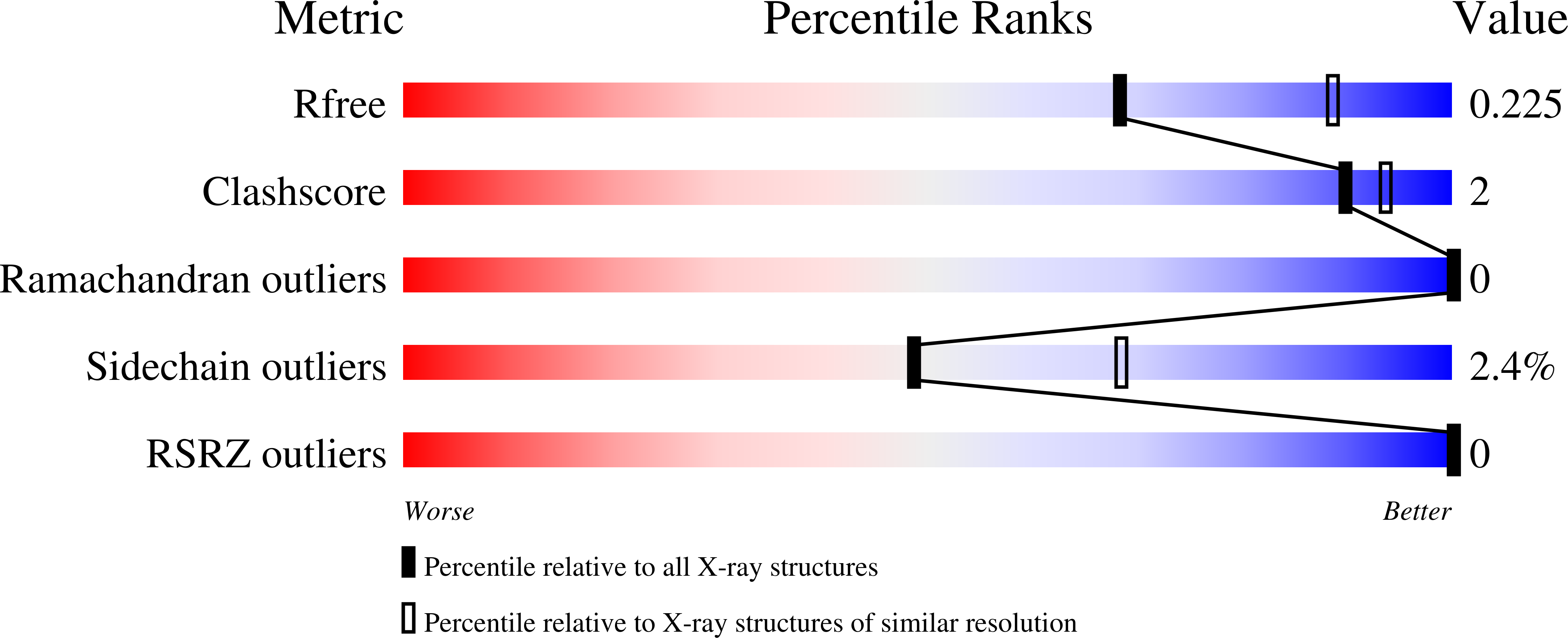Arabidopsis Accelerated Cell Death 11, ACD11, Is a Ceramide-1-Phosphate Transfer Protein and Intermediary Regulator of Phytoceramide Levels.
Simanshu, D.K., Zhai, X., Munch, D., Hofius, D., Markham, J.E., Bielawski, J., Bielawska, A., Malinina, L., Molotkovsky, J.G., Mundy, J.W., Patel, D.J., Brown, R.E.(2014) Cell Rep 6: 388-399
- PubMed: 24412362
- DOI: https://doi.org/10.1016/j.celrep.2013.12.023
- Primary Citation of Related Structures:
4NT1, 4NT2, 4NTG, 4NTI, 4NTO - PubMed Abstract:
The accelerated cell death 11 (acd11) mutant of Arabidopsis provides a genetic model for studying immune response activation and localized cellular suicide that halt pathogen spread during infection in plants. Here, we elucidate ACD11 structure and function and show that acd11 disruption dramatically alters the in vivo balance of sphingolipid mediators that regulate eukaryotic-programmed cell death. In acd11 mutants, normally low ceramide-1-phosphate (C1P) levels become elevated, but the relatively abundant cell death inducer phytoceramide rises acutely. ACD11 exhibits selective intermembrane transfer of C1P and phyto-C1P. Crystal structures establish C1P binding via a surface-localized, phosphate headgroup recognition center connected to an interior hydrophobic pocket that adaptively ensheaths lipid chains via a cleft-like gating mechanism. Point mutation mapping confirms functional involvement of binding site residues. A π helix (π bulge) near the lipid binding cleft distinguishes apo-ACD11 from other GLTP folds. The global two-layer, α-helically dominated, "sandwich" topology displaying C1P-selective binding identifies ACD11 as the plant prototype of a GLTP fold subfamily.
Organizational Affiliation:
Structural Biology Program, Memorial Sloan-Kettering Cancer Center, New York, NY 10065, USA.





















